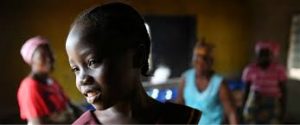INTERNATIONAL DAY OF THE GIRL CHILD


The International Day of the Girl Child is celebrated annually on 11th October. The main aims of the day are to promote girl’s empowerment and fulfilment of their human rights while also highlighting the challenges that girls all over the world face. Launched in 2012 by the United Nations general assembly, issues focused on by the International Day of the Girl Child are education, equality, child marriage, access to services regarding puberty and sexual health and addressing issues around gender-based violence.
The Day of The Girl Summit, held at United Nations headquarters every year aims to bring together organizations that serve girls to further the advancement of their human rights. In Africa, the girl child has unfairly been marginalized on different levels as the case may be; however, it can be said that this marginalization first starts from the family.
Before now, most African families tends to prioritize male children over the female; for example, when deciding on what child gets education and what level of education will such child get? The male child is given precedence at the expense of the girl child; they believe the male children are been prepared for all the manly task ahead of them and the girl child is most likely forced to drop out from school. This is done mostly because of the notion that the girl child will definitely end up in the kitchen. This belief also guides parent when sharing house chores between children; the girls are subjected to all kinds of strenuous chores in a bid to train them for womanhood.
When such a girl grows up and needs to provide for herself and she cannot, she does anything within her reach to get what she want which might expose her to abuse and prostitution. There is an adage which says if a woman is not educated, she tends not to educate her daughter and the trends continues;it takes a resilient girl to break such chain of illiteracy.
Across the world, girls face adversities that hinder their education, training and entry into the workforce.They have less access to information, communication technology and resources, such as the internet where the global gender gap is growing.
According to research,a quarter of young people, most of them girls, are neither employed nor getting an education or training.

WHAT CAN BE DONE?
Parents should ensure that every girl child gets educated whether formal or informal. Ensure she has time for study and encourage her to.
They could also make them available to partake of the social services provided to help educate the girl child; for instance the federal government of Nigeria through the women affairs structure for girls has provided informal education,skill acquisition programmes and internship to help develop the girl child.
Organize programmes to help mold and develop their self-esteem by bringing mentors and role models that the girl child can look up to and emulate.
According to United Nations, this year alone, 12 million girls under 18 will be married, and 21 million girls aged 15 to 19 years will become pregnant in developing regions.
And yet, they persist, they succeed. They are innovating technology to solve global challenges, they are standing up for the environment, they are raising their voices against violence and they are preparing to run for office.




